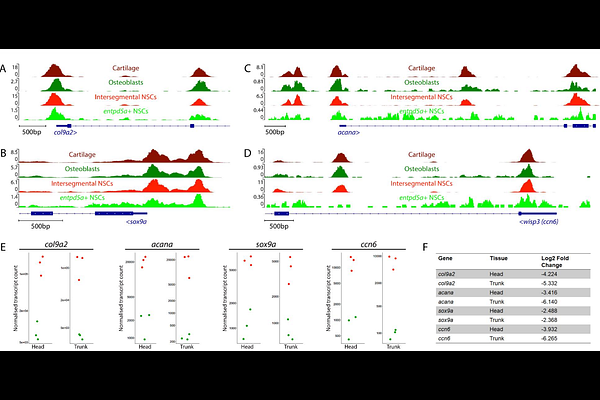Integration of ATAC and RNA-sequencing identifies chromatin and transcriptomic signatures in classical and non-classical zebrafish osteoblasts and indicates mechanisms of entpd5a regulation

Integration of ATAC and RNA-sequencing identifies chromatin and transcriptomic signatures in classical and non-classical zebrafish osteoblasts and indicates mechanisms of entpd5a regulation
Petratou, K.; Stehling, M.; Müller, F.; Schulte-Merker, S.
AbstractTwo types of osteoblasts are required to assemble the zebrafish embryonic skeleton: classical osteoblasts homologous to the mammalian cell, and notochord sheath cells, which serve as non-classical osteoblasts. The gene entpd5a is critically required for ossification via both types of osteoblasts. Despite the indispensability of zebrafish models in vertebrate research, the genetic regulation of bone formation, as well as mechanisms of transcriptional control of entpd5a, remain largely unknown. Here, using a newly generated transgenic line, we isolate classical and non-classical osteoblasts from zebrafish embryos and performed both ATAC-seq and RNA-seq. We analysed results independently and integratively to understand those chromatin dynamics and accompanying transcriptomic changes that occur in different skeletal cell types. We show that although Dlx family factors are playing important roles in classical osteoblast regulation, Hox family factors are involved in governing spinal ossification via non-classical osteoblasts. We further present a resource-driven analysis of the entpd5a promoter, experimentally validating the ATAC-seq dataset and proposing mechanisms of regulating the complex entpd5a expression pattern during zebrafish osteogenesis. Our results thus provide a necessary comprehensive resource for the field of bone development and indicate spatio-temporally regulated promoter/enhancer interactions taking place in the entpd5a locus.